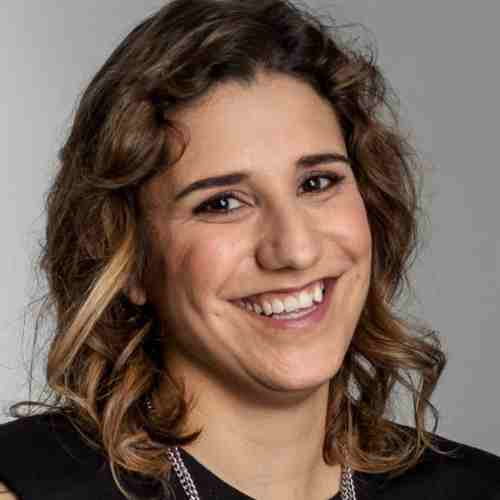Triple gender gap in our industry threefold: hardly any women at board level, hardly any women among the founders of fintechs and financial service providers, and women use banking and financial products less frequently than men. Even in our oh-so-innovative fintech industry, as we hunt for untapped markets, products reach only one in five women (and one-third of men). Non-binary people as always invisible in these data collections.
Yet women are by far the largest underserved customer group in financial services: $700 billion in untapped revenue potential around „Women in Finance,“ according to Oliver Wyman.
Data is not collected
For an industry that has been stagnant for years, actually be an attractive market, especially because women are better at repaying their loans on time, investing more defensively (and thus more successfully), and defaulting less frequently than men, according to studies and reports.
Instead? Wave goodbye to the – surprise – predominantly male bankers and fintech managers. Products are of course accessible to everyone, pardon me, everyMAN, thus also for these niches of the …well, … what were they called again, these…uh? … oh yes, women. The products are there for everyone and they are pleased that the products are so well received in society. How good? Unfortunately, there is no information about this. As a person with 14 years of banking & fintech under his belt, I can tell you in confidence: because this data itself is not collected internally at all.
Advertising phrases target men
Who uses which products, how, when, and what similarities and differences exist is not even evaluated. In times of Big Data and supposedly individually tailored financial products, this is an indictment. And so the big slogans like: Together we achieve more, Wishes become reality, Bank by your side, #Positive Impact, Germany banks anew, etc. by and large mean „at least if you’re men“.
„Our products are all gender neutral!“ it sounds indignantly, while at the same time complacently painting a hook on the topic of „diversity“. Because it can’t be much more diverse than „for all“, which really covers a wide range of needs. If that were the case, the split of usage would pretty much have to be 50/50 or 51/49. Yet for years, banking products were built only for men and their interests; women have only been allowed to have their own bank accounts in Germany since 1962.
Gaps do not end in front of the store
To think that this is the end of the matter just because women will then have access to products built for a completely different target group is completely irrational: women do not discard their individual needs and situations such as gender pay gaps, gender pension gaps when they enter a branch or download a banking app.
In reality, Feminist Finance has two major problems at once:
- Our industry mainly builds solutions for people who don’t need them: People who already have a lot of money.
- Women are still seen as a niche – in almost every industry, which is why there is less investment in female founders and products for women.
In 2002, Joy Anderson co-founded the Criterion Institute in the U.S. and co-founded the concept of gender-responsive investing: investing primarily in companies that build or support financial innovations that benefit women.
Women – about too niche?
In Germany, the situation is different. Startups with a focus on women or an intersectional approach are denied support because they are too „niche.“ Vitamin had to cease operations in 2023 due to lack of investment. In a sea full of neobanks and neobrokers that don’t differ in appeal, target market, or benefits, and where in-car payments in a few models from one automaker are hailed as „the next level of embedded finance,“ a fintech that especially caters to people previously not thought about by the financial system can’t close a new funding round.
Women are not the only ones who now have access to the financial system, but are far from financially inclusive:
- Homeless,
- Refugees without seventy trillion documents,
- trans*,
- migrantized,
- stateless and poor people
And women are also represented in all of these groups.
Women do not bring banks coal
Outside our LinkedIn success bubble: 60% of all women receive a pension of up to 900 euros. By comparison, the figure for men is 29%. 37% of all women even receive only max. 600 euro pension. Reason: „Differences in employment biographies.“ Statistically, there is not as much money in the whole life as in men. And that is the real reason why women are still given little to no consideration by the financial system: Banks mistakenly consider them an unattractive segment. We don’t want to solve these problems, because these people don’t have any money. We want wealth tech and even more coal from rich people. Why doesn’t the financial industry get the idea that it is their historic duty to make sure that previous barriers are removed so that ALL can build wealth? It is a mystery to me!
It’s not about launching a pink glittery card. No joke, there really are quite a few bankers who think this way. At Web Summit, I once asked 37 CEOs and board members of banks and fintechs what keeps them from addressing gender-specific needs. The most frequently mentioned answer? They were afraid that this would upset their male customers. That says a lot about what these bankers think about their male customers.

Five approaches:
The relationship between gender (and age) and banking behavior is real and more complex than the stereotypes and clichés. The solution is very simple:
- More analysis of needs: understand WHY women and certain populations use financial products less. Who uses our products and why? Who doesn’t? This includes: diverse staffing of product teams and in decision-making rounds. Because women are not ONE huge niche, there are thousands of profiles with different needs. You’re not investing in an ETF yet [oder beliebiges anderes Werkzeug] – what’s stopping you?
- Better and transparent products can be built and marketed with this knowledge, products and services that are REALLY tailored to a wide variety of situations and offer real added value. Oh, you’re going on parental leave? „Here’s a savings product that your partner person and you can use to create a fair balance of retirement benefits.“ Works much better than the screaming Check24 family or marketing around status and expensive watches or cars.
- Education, education, education: Financial education, low-threshold and thanks to modern technology in all kinds of languages – but especially in easy language. As a financial industry, we don’t just manage money. As an industry, we can have a significant impact on whether we still have to look at studies on minimally shrunken pension gaps in 10 years‘ time, or whether something finally changes. And we can control via hypersensitization that the necessary knowledge is always imparted when it is needed. Hey, you’re studying, this is what you need to look at for financing; Hey, you’re working, look here, the pay gap, you can do that for yourself; You’re going to get married or start infertility treatment, count on the following costs and this is how you can deduct them, finance them, whatever.
- Lobbying: Financial institutions need to support existing desires, such as the abolition of spousal splitting, and boldly develop new models that help their TOTAL clientele become wealthier and advocate for them publicly and politically.
- For customers and investors, the following applies: Only support those banks that have understood this. We can also make a difference as private individuals, angel investors and VCs.
The need is there. The business case is there. ALL benefit. Only the narrow-mindedness of German bankers (including fintechs) stands in the way.
Let’s change that.
Already published in this series:





